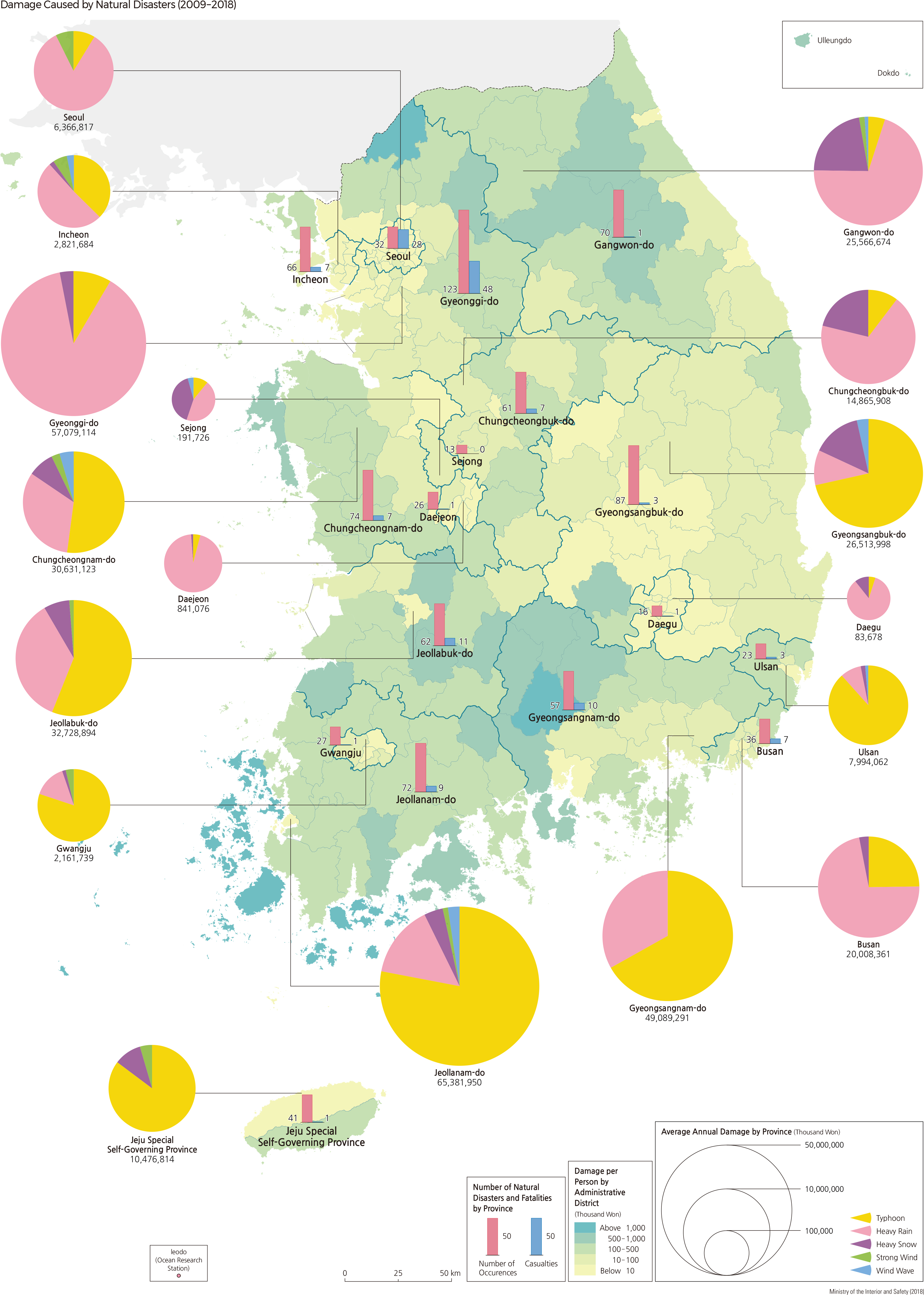English II 2020
Natural disasters threaten human safety, and their magnitude has caused unprecedented damage in recent years. The severity and frequency of natural disasters are increasing while the summers are getting warmer and the winters are getting colder due to the effects of global warming. Korea is frequently hit by heat waves, heavy rains, and typhoons in the summer, and heavy snows are frequent in the winter. These events often bring detrimental effects to Korea. The most critical natural disasters in Korea are typhoons and heavy rains. An increase in heavy rains and snowfall has been observed since 1991, and this increase has been especially remarkable since the early 2000s. Damage from heavy snow has also risen due to its increasing frequency.
In Korea, the impact of natural disasters varies and is much more severe for certain typhoons and heavy rains. In 1987, more than 1,000 people were killed or missing due to Typhoon Thelma. In 1988, Typhoon Yanni struck the Homan region and the subsequent flooding killed 384 people, with an additional 307 missing. A huge number of victims suffered from floods and typhoons from 1984 to 1990. There were over 360,000 flood victims around the Seoul and Gyeonggi-do area in 1984. The incredibly disastrous flood that occurred in 1990 left more than 200,000 victims and one trillionwon worth of damage. During the past 30 years, the most adverse natural disaster in Korea was Typhoon Rusa in 2002, whose damage cost the nation more than 8 trillion won. In 2003, Typhoon Maemi caused a loss of more than 6 trillion won. In 2006, Typhoon Ewiniar inflicted economic losses totaling more than 2 trillion won. Since then, natural disasters have inflicted less serious damage, causing 141.3 billion won of property damage in 2018.
Damage caused by natural disasters has been slightly increasing since 2000. Heavy rains and typhoons have intensified as a result of global warming, and inflation has led to increases in the cost of living. However, the number of casualties, disappearances, and victims has been gradually decreasing as people are more aware of natural disasters than in the past. Also, the government has invested heavily in preventing damage and health hazards from natural disasters. In addition, forecasting technologies have improved over the years, which has played a greater role in preparing for and mitigating the damages from natural disasters. |
